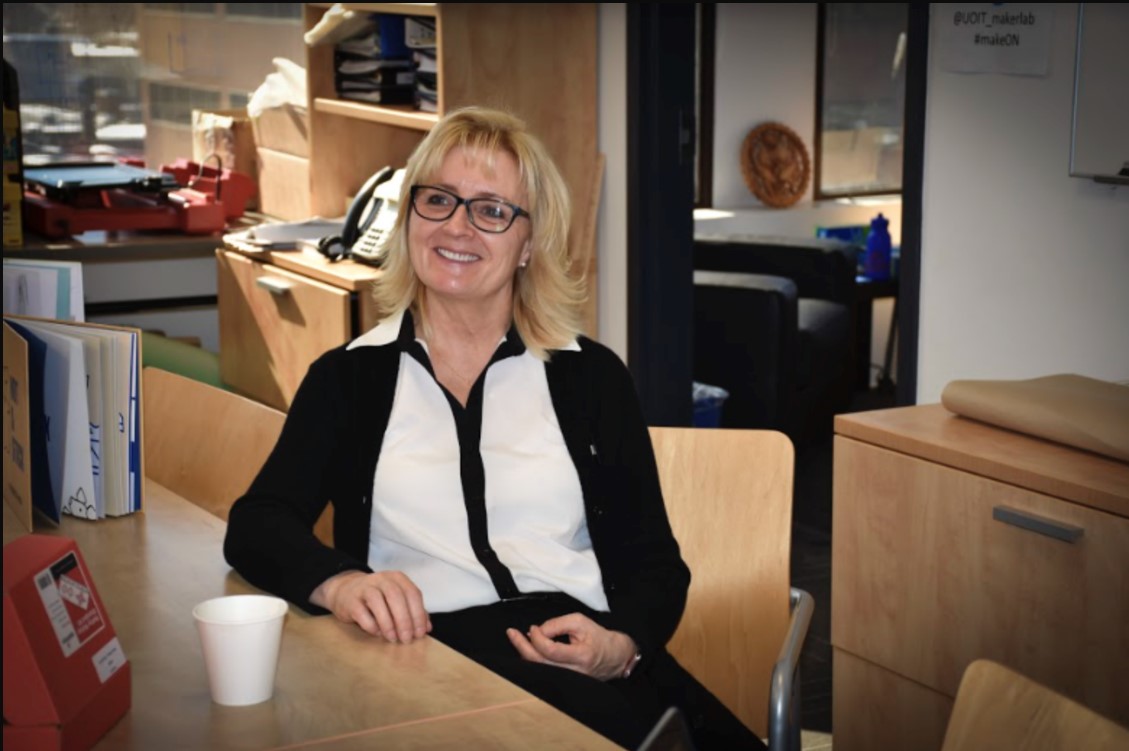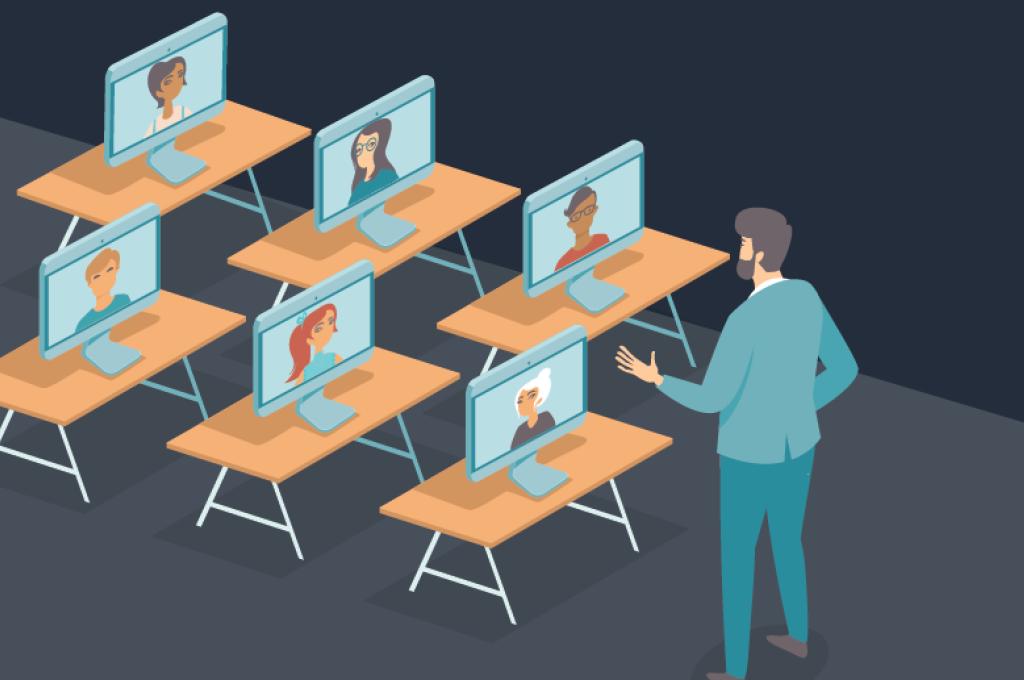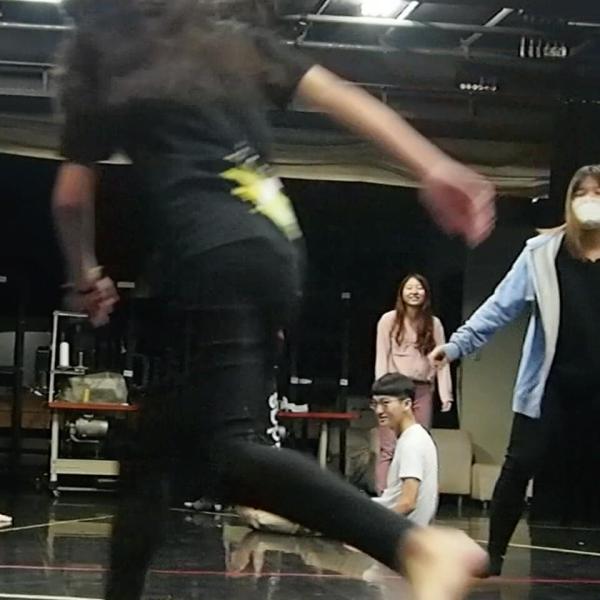Teaching outside the box at an unprecedented time
“The initial sessions focused on “Let’s get you online, let’s figure out how to organize your content so your students aren’t confused, so they’re not frustrated,” she says. “Because the first thing that will happen if they get frustrated is they will check out.”
There was inconsistency across school boards in terms of the web platforms they were using, and there was a lot of worry over privacy so most schools were holding off on doing video chats with students in favour of assignments students would just turn in.
Hughes and her team did some online professional development sessions for higher education first, then put the word out on social media for kindergarten to Grade 8 teachers and then 9 to 12. There was massive demand — they had around 60 teachers in one session and then had to cap it at 30 and just offer more sessions, in order to maintain the interactivity.
“The first few weeks were kind of technical,” Hughes says. “Then they became more interested in “Okay. Now how do I engage my students more?”

Janette Hughes in the STEAM 3D Maker Lab at Ontario Tech University
Image courtesy of Laura Dobos
Hughes and her team taught teachers — and in some cases, classes of students — how to create video games online, how to make sure they’re hitting the right teaching deliverables while their students buzzed over Bloxels, a web-based platform that allows students to build their own games using teamwork and basic coding.
The sessions were fashioned out of teacher requests — many were navigating concerns around privacy in synchronous (ie. back-and-forth video) lessons, so they did one on that.
“If we've learned nothing else from COVID, what we know is that we need human connection and kids need to see their friends, even if it's on a screen,” she says, adding that for many students, a teacher is one of the most important adults in their lives.
Through all of this professional development work, Hughes has been trying to help educators not “put old wine in new bottles” — a tendency, she says, to try to use the same old pedagogies on a tech platform instead of innovating and working to enhance learning and engage students.
Helping to shape how online learning will be part of education’s new normal
Before the pandemic, Hughes and her team had already planned to study a few school boards’ tech-forward approach to teaching the new Ontario math curriculum, which, for the first time incorporates coding.
Earlier in the year, with help from Hughes’ team, Erica Lantin, a Grade 4 and 5 teacher at North Star School in Atikokan, Ont., got her class set up on Scratch, a coding story-building program.
“Once the students learned a little bit about what Scratch was all about they wanted to work on it whenever they had any free time,” Lantin says. “They started to make interactive stories where they would code different characters to do different things then orally tell me the story.” There were class “experts” who helped anyone in need, and Lantin saw a lot of students working together.
While they kept some of this up during the school shutdown, Lantin is looking forward to incorporating more online maker opportunities for her students in class this fall.
Equipping teachers with skills to teach students virtually has been vitally important, says Hughes, particularly because not every child will be returning to school: More than 13,000 students in Durham District School Board, one of Ontario’s largest public boards, have indicated they’ll only attend school online.
2020’s defining moments shape how young people express themselves online
Her expertise is in pedagogical approaches — how learning works, specifically how it works with technology — so the pandemic’s propulsion of school into the virtual world has been fascinating for Hughes. It’s also led her to research creative self-expression among students online in the time of COVID, particularly how teens are shaping their identities around the pandemic and Black Lives Matter — “the two defining events of 2020” — on social media.
Hughes’ years of research and the way she nimbly applied it to help leverage digital learning at a moment of crisis also earned her an esteemed place on the International Science Council’s COVID Education Alliance — a group of global experts tasked with mapping out what education will look like around the world in the next 30 years as the pandemic continues to revise how we do business, relate to one another and learn.
While she’ll accept no praise for her swift response to teachers’ professional development crisis when COVID hit, she acknowledges she could’ve just sat this one out.
“But when you’ve been a teacher in the classroom and you understand what the challenges are, you are part of that community and you want to support however you can.”
And like many Ontarians with children in school, she’ll be watching closely to see how the school year unfolds this fall.
“I’m seeing all these images of how the classrooms are set up and it’s horrifying to me,” she says, recounting one photo of a primary class in which the teacher had created a painted cardboard cut-out around each desk, designing them like fire trucks with a shield in front and on both sides. “She’s trying to make it fun. But students are going to be learning in cubicles. This is not the way we learn.”






